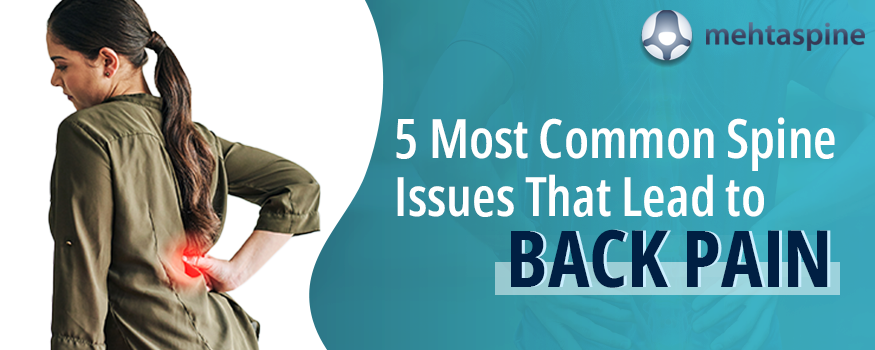5 Most Common Spine Issues That Lead to Back Pain
Back pain is the most ubiquitous condition everyone experiences at a certain point in life. The resilience of your back may guard you in your 20s, but as your 30s begin, back problems often pay their visits for even a tiny misstep. In most cases, back pain tends to be due to sudden strains, stress caused by physical activities that we are not accustomed to. However, in rare instances, back pain can be a sign of an underlying condition that may require swift attention from a back pain specialist in UK, lest it develops into a severe and prolonged issue.
In this blog, with insights from spine surgeon Jwalant S. Mehta, we delve into these common severe conditions that may be causing back pain in men and women in the UK. Read on for valuable information and expert guidance.
5 Most Common Spine Issues That Lead to Back Pain:
Not all back pain problems are caused by physical stress and strain. In some cases, back pain can emerge suddenly and persist, often due to inherent spinal issues that have been developing over an extended period. At our spinal clinic in Birmingham, we frequently encounter patients with chronic back pain stemming from the following spinal issues:
Herniated Disc: A severe and prevalent spinal issue, a herniated disc occurs when the soft inner core of the spinal disc protrudes through the more rigid outer layer, exerting pressure on nearby nerves. This can lead to back pain, numbness, and leg weakness.
Degenerative Disc Disease: Linked to aging, degenerative disc disease results from prolonged wear and tear on spinal discs. Over time, these discs lose their cushioning ability, causing pain, stiffness, and reduced flexibility in the back.
Spinal Stenosis: Gradual narrowing of spaces within the spine, known as spinal stenosis, increases stress and pressure on nerves and the spinal cord. This compression can manifest as back pain, weakness, and tingling sensations in the legs.
Spinal Tumours: In some cases, tumours that develop in and around the spine can trigger back pain, too. Whether they are benign or malignant, they tend to exert extra pressure on the spinal nerves, leading to chronic back pain until the tumours are adequately treated.
Scoliosis: Characterized by an abnormal spine curvature, scoliosis often leads to back pain. Beyond pain, scoliosis can induce structural changes that may require prompt treatment for resolution.
Osteoarthritis of the Spine: An age-related joint disease, osteoarthritis occurs when the cartilage between vertebrae breaks down—this loss of smooth cushioning results in pain, stiffness, and inflammation in the affected area.
These five are the most common contributors to chronic, non-trauma-related back pain. While these represent major causes, underlying spinal conditions, such as sciatica, spondylolisthesis, ankylosing spondylitis, spinal tumours, and osteomyelitis, can also result in persistent back pain.
If you experience back pain without a clear incident of physical stress or strain, it is advisable to promptly consult a back pain specialist in the UK. If you live in and around Birmingham, you can consult Children and Adult Spinal Surgeon Mr. Jwalant S. Mehta here.


